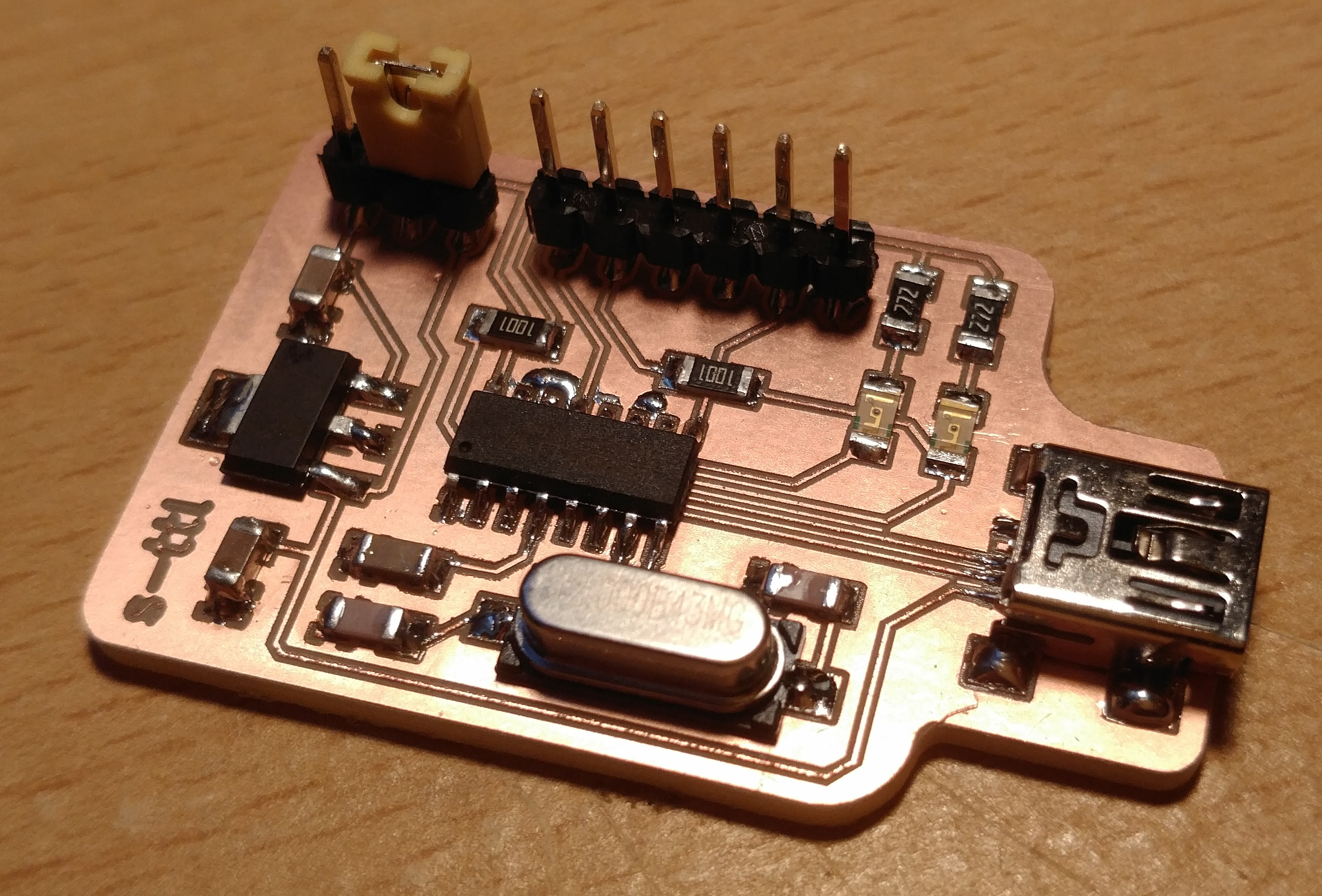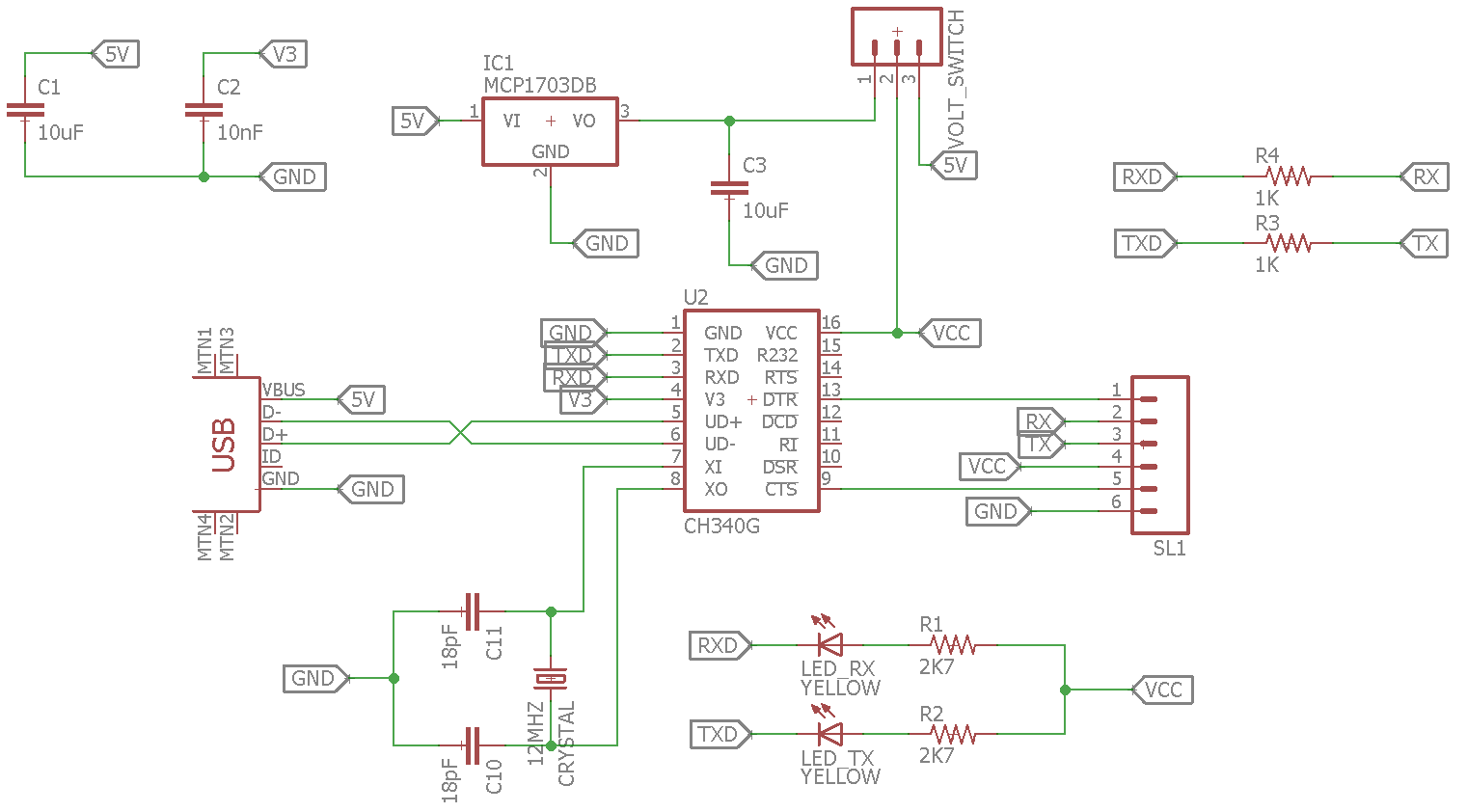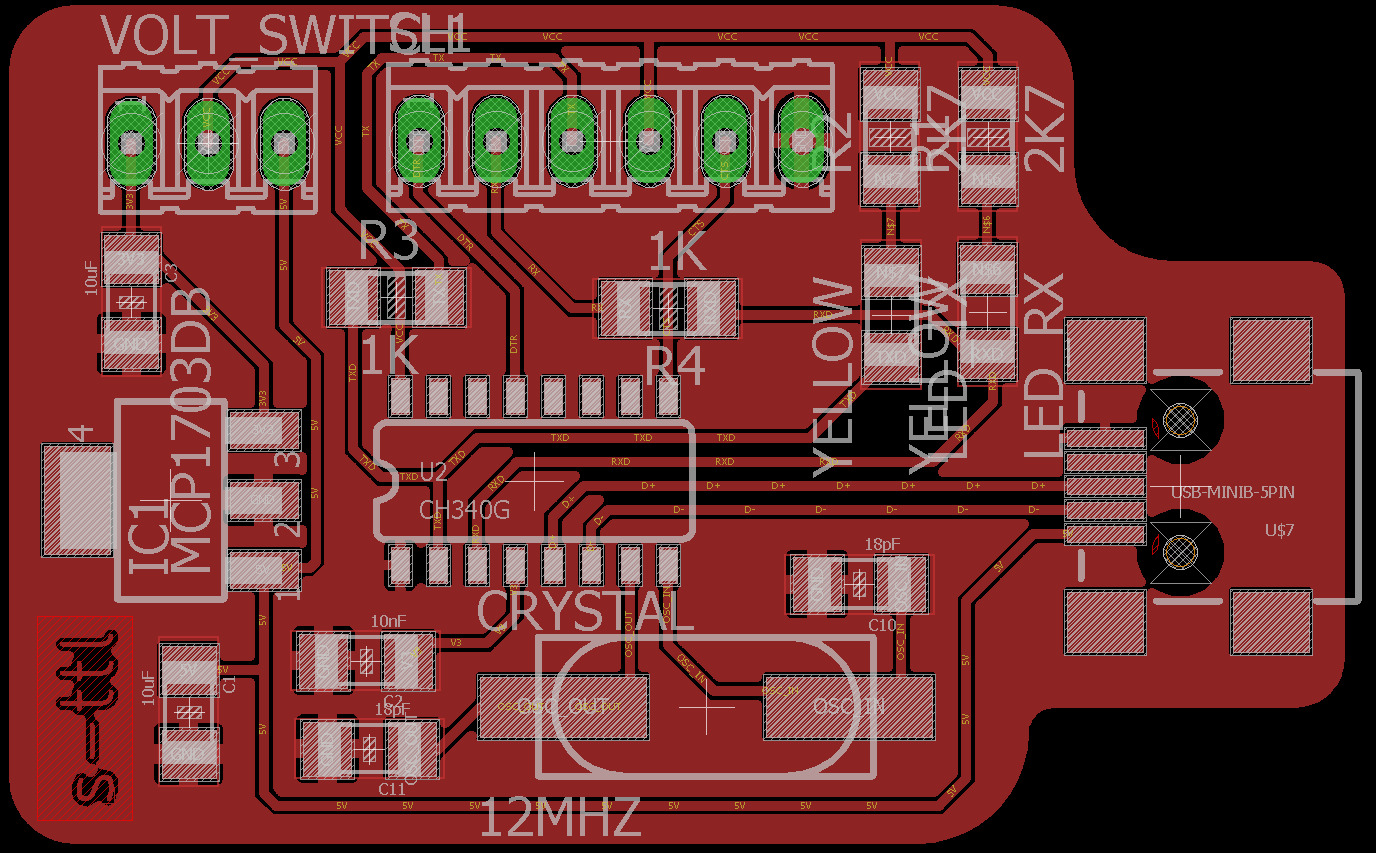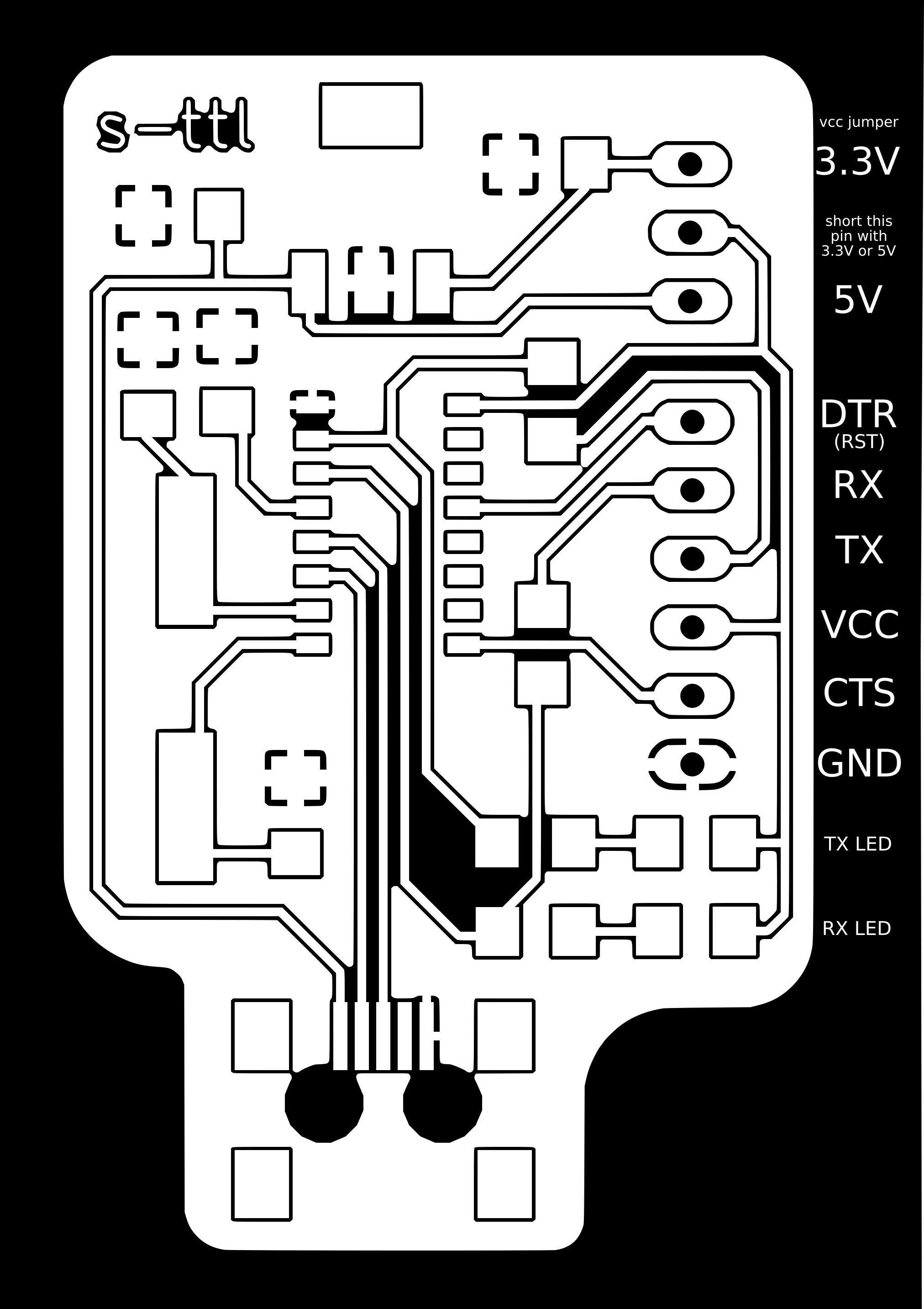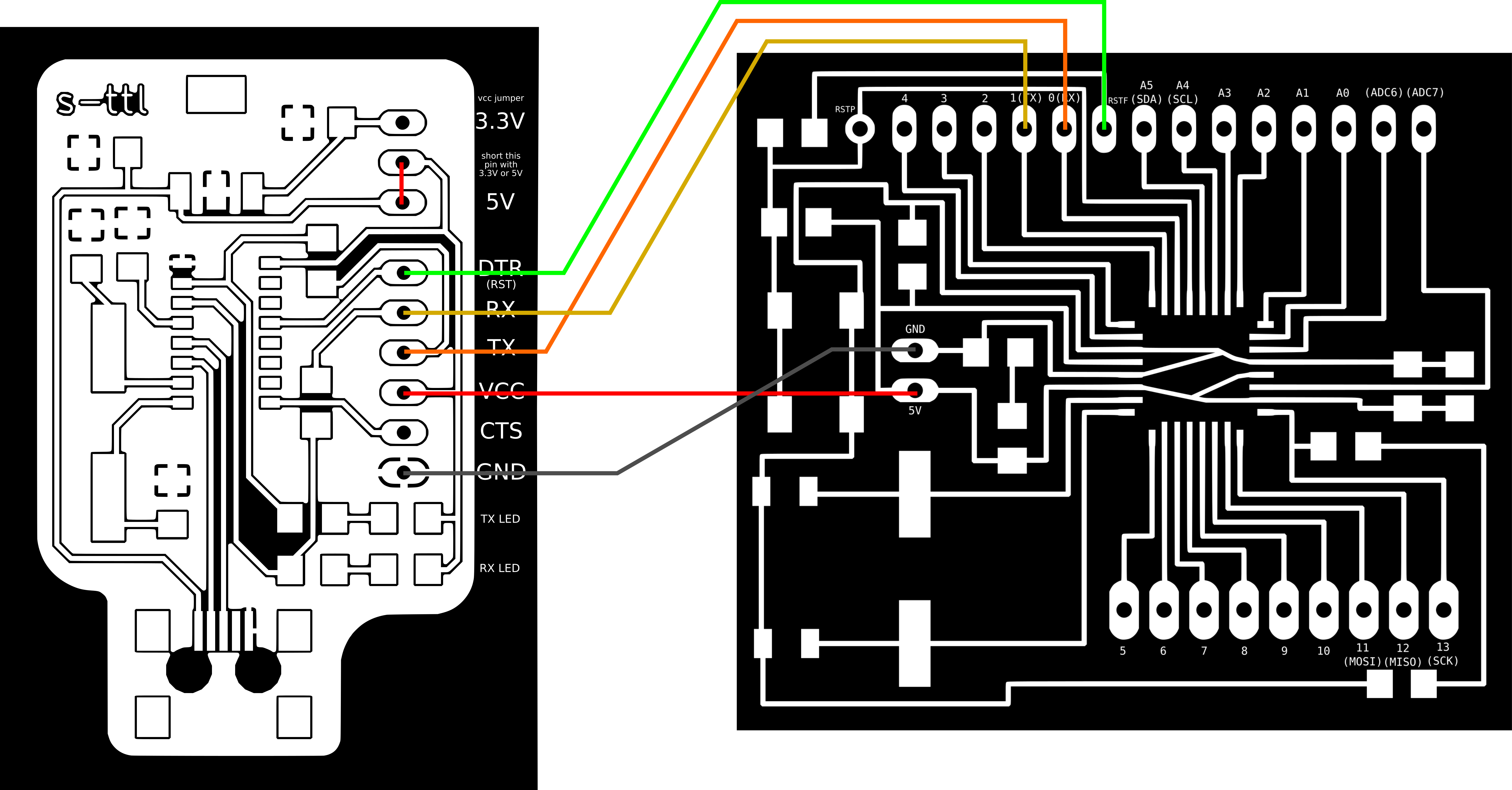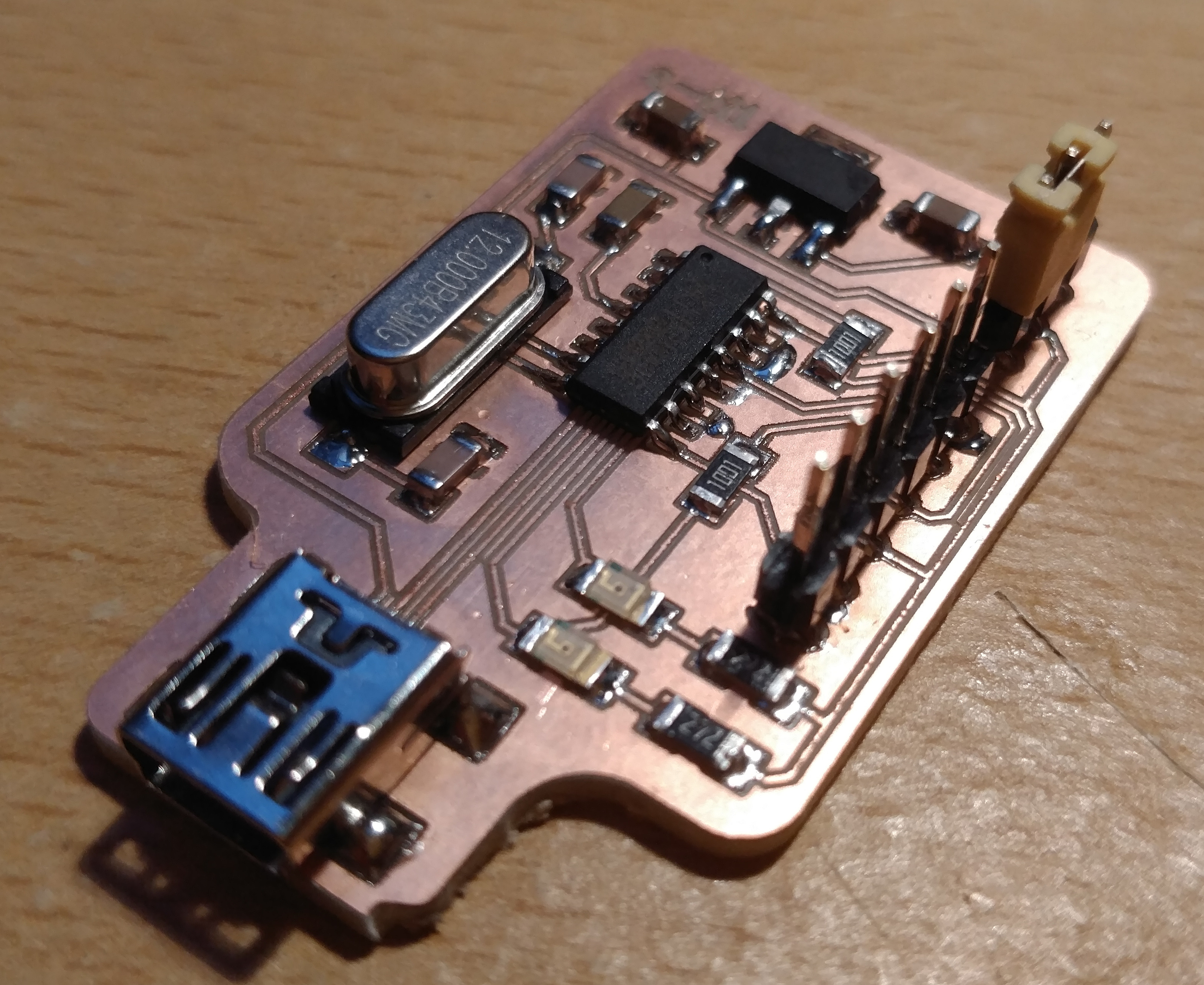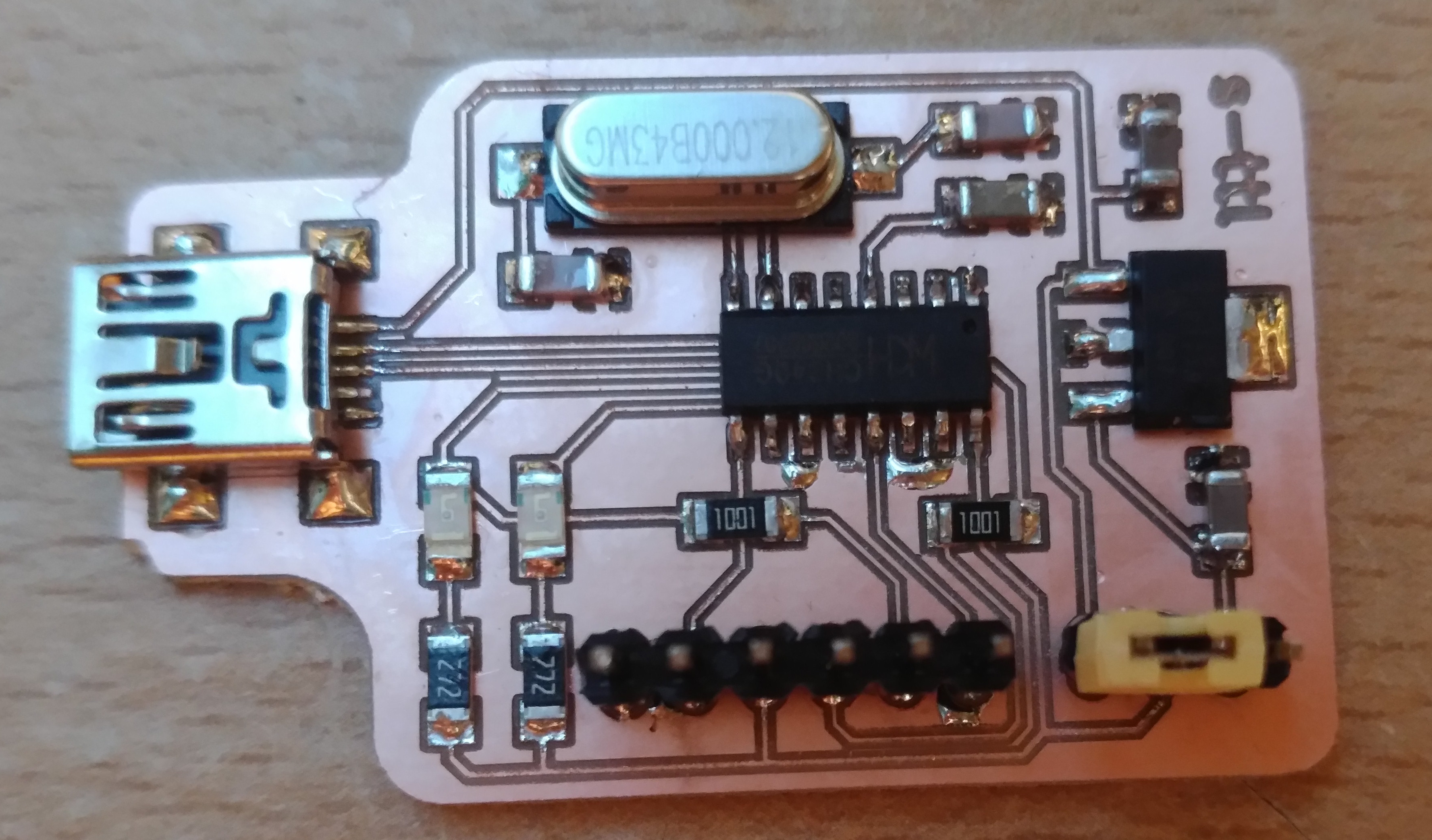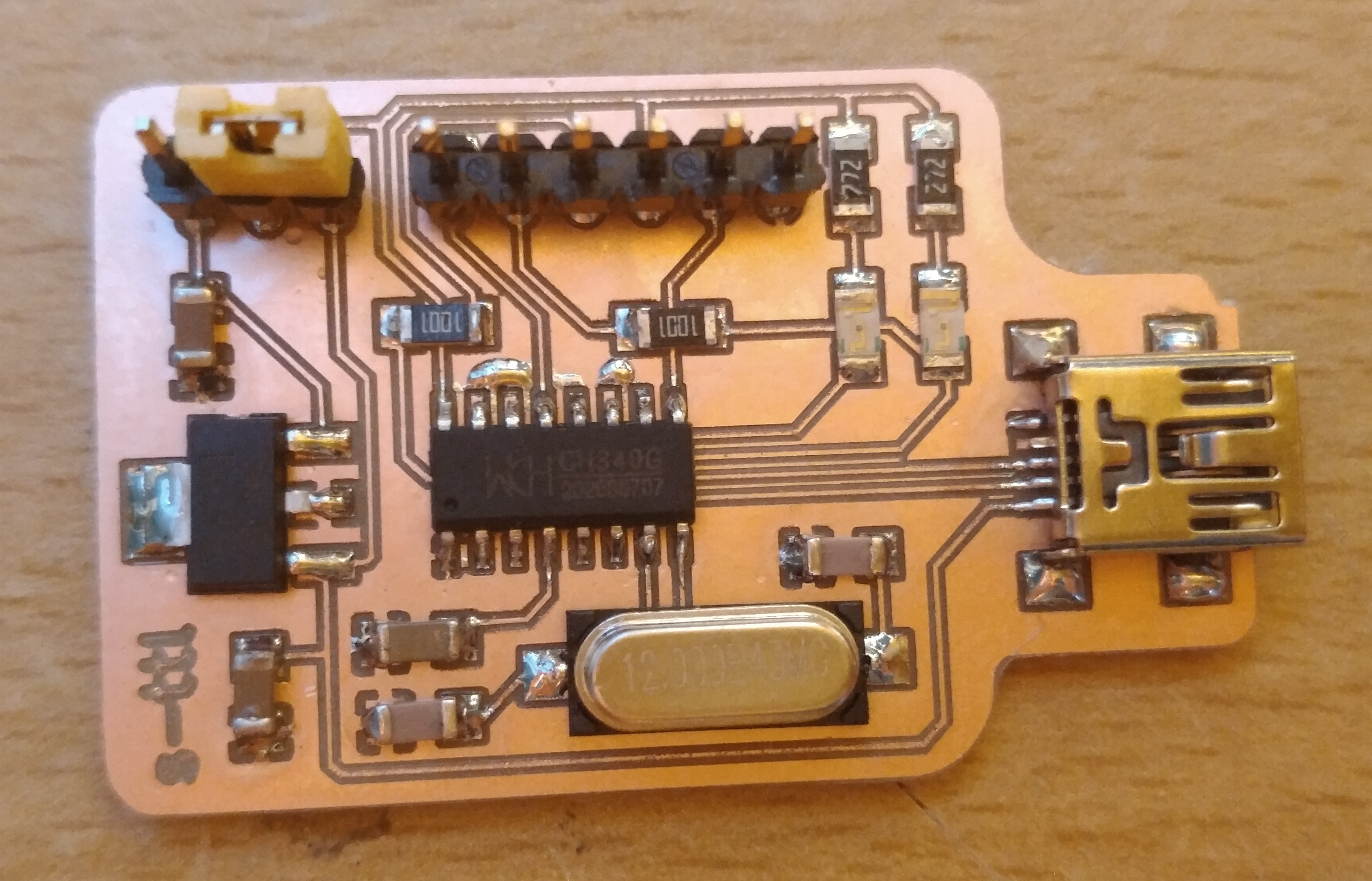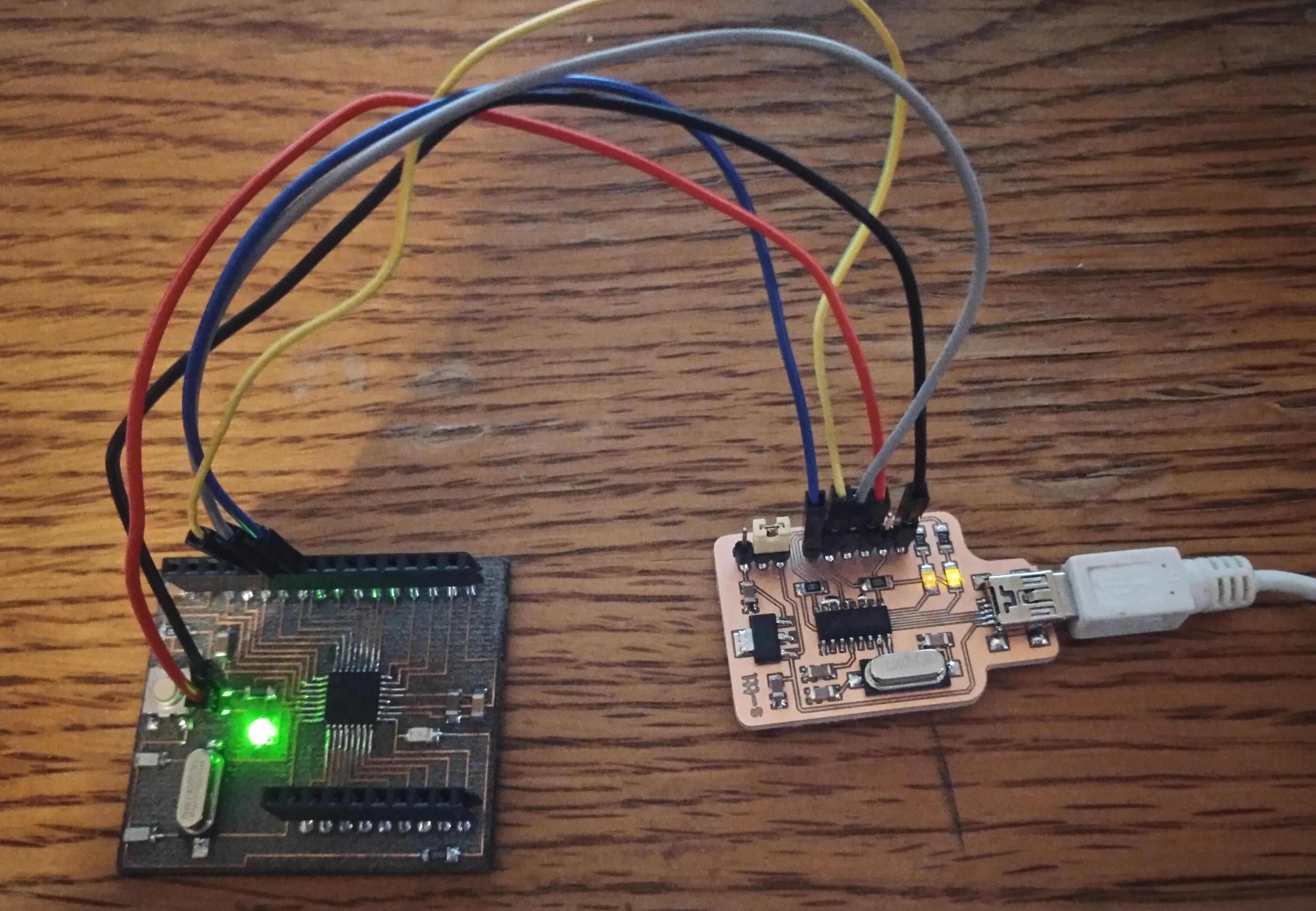satsha-ttl
satsha-ttl
After some time of buying expensive FDTI cables (about 20$ nowadays) and having the need to use several USB to serial converters for my Fab Academy students, I developed my own fabbable solution. satsha-ttl features a CH340G USB to serial chip and it is designed to be cheap, reliable and easy to be reproduced. It uses an LDO voltage regulator and a jumper to switch between 3.3V and 5V, both for power and logic levels of TX/RX. The design of the satsha-ttl also allows to easily integrate it into existing boards requiring an USB communication without having a dedicated hardware implemented into the microcontroller (eg the 328p).
Here are the features of the satsha-ttl:
- CH340G USB to serial chip
- selectable voltage of 3.3V and 5V (both for power and serial)
- 250mA current on 3.3V
- USB power for 5V
- CTS and DTR pins
- mini USB connector
- no drivers needed for latest Windows/MacOS/Linux
- size of 45x28mm
- cost 1.3€/1.6$ (buying the components from China, BOM)
satsha-ttl PCB:
satsha-ttl schematic:
satsha-ttl board:
Downloads
downloads (right click download as):
- satsha-ttl schematic
- satsha-ttl board
- satsha-ttl internal traces png 0.1mm
- satsha-ttl cutout png 0.1mm
- satsha-ttl internal traces png 0.2mm
- satsha-ttl cutout png 0.2mm
- satsha-ttl BOM ods
- satsha-ttl BOM xlsx
Getting started with satsha-ttl
Before connecting satsha-ttl to your computer is really important to check if the connections are ok, as it could damage the USB port of our computer if they are wrong. A smoke test can also be done beforehand with an USB hub or an USB power supply. Install the drivers for the CH340G if satsha-ttl is not recognized automatically from your OS. In case you are using Windows 8 or older, or older versions of MacOS/Linux download and install the drivers from here.
Find below the satsha-ttl pinout:
satsha-ttl can be used to supply power to another microcontroller board, other than connecting the serial. In case of supplying power to another board make sure its voltage and current requirements matches the selected voltage on the satsha-ttl jumper and the maximum current the satsha-ttl/USB port can output. It is possible to use the satsha-ttl as a programmer for AVR microcontrollers with installed the Arduino bootloader, in this case the DTR is used software reset pin.
Here is an example scheme on how to connect satsha-ttl to program a satshakit:
Media
satsha-ttl pictures:
satsha-ttl connected with a satshakit:
satsha-ttl 1 million lines gcode test:
satsha-ttl 2 uploading to a satshakit using serial 5V:
satsha-ttl receiving data from software serial 3.3V:
satsha-ttl streaming gcode to grbl satshakit @250000 bauds 5V:
Author
- Daniele Ingrassia
Contact
Thanks
Fablab Kamp-Lintfort
Hochschule Rhein-Waal
Friedrich-Heinrich-Allee 25, 47475 Kamp-Lintfort, Germany
fablab@hochschule-rhein-waal.de
License
This work is licensed under the terms of the open source license: Creative Commons Attribution-ShareAlike 4.0 International (CC BY-SA 4.0).
